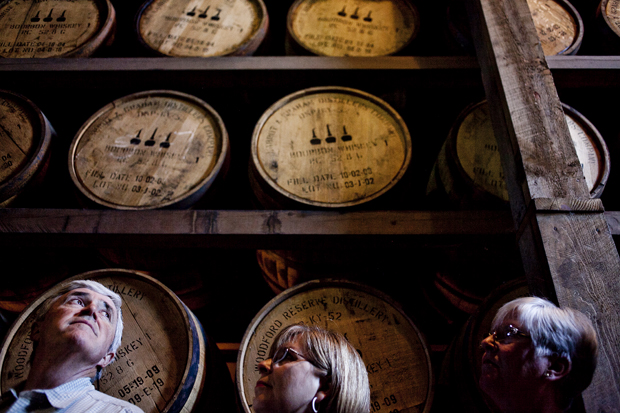Legacy of Bourbon: ‘The old fashioned way’
November 5, 2010
This year marks the 100th anniversary of the Four Roses distillery in Lawrenceburg. The year before the popular distillery opened, President William Howard Taft protected the tradition of Kentucky bourbon by defining the difference between whiskey and bourbon. Today, nearly 99 percent of the corn-based alcohol comes from Kentucky, though its namesake, Bourbon County, no longer produces it. The Herald presents the legacy of bourbon, whose roots are deep in Kentucky history.
When Franklin senior Alan Bush visited Maker’s Mark Distillery, he was surprised to see that bourbon is still made the “old-fashioned” way.
“People put a lot of work into it,” he said.
The first settlers of Kentucky had trouble transporting crops before they began to rot, according to the Kentucky Distillers’ Association. As a result, these settlers began converting their extra grain into whiskey.
Bourbon must contain 51 percent corn and be put into charred oak barrels, according to the association. Nothing can be added except water.
Bill Samuels, president and CEO of Maker’s Mark, said the barrels must be burned because it caramelizes the wood sugars. The process is what gives bourbon its taste and dark color.
Samuels grew up around bourbon.
His family has been making liquor since 1784, and Maker’s Mark has been family-run since it hit the market in 1959.
Much of the early whiskey was made in Bourbon County, hence the whiskey’s name, Samuels said.
“A tradition was to put the county of their farm on the head of the barrel,” he said.
Because so many of the barrels came from Bourbon County, the drink became known as bourbon elsewhere in the country.
Along with a name that originated in Kentucky, the beverage itself was also introduced to people nationally from the Bluegrass State, said Erika Brady, a folk studies and anthropology professor.
The bourbon industry has created about 10,000 jobs that make a combined $442 million a year, according to the KDA.
Samuels said bourbon was the only sector of the manufacturing economy that grew during the recent recession.
According to the Kentucky Revenue Cabinet, bourbon production has increased 50 percent in the past 10 years.
“After 230 years of corn whiskey and bourbon, there’s never been a better bourbon than what’s being made today,” Samuels said.
Associate economics professor Dennis Wilson said the bourbon business is doing well in a time of recession because people buying it are wealthy enough to keep buying it.
“People see it as enough of a luxury not to cut it back,” Wilson said. “Their income would have to be severely down in order to cut down.”
Samuels thinks bourbon is getting more essential to Kentucky every day.
Its popularity has also grown all over the world.
“It’s on the top shelf of all the fine watering holes all over the world,” Samuels said.
Amira Ahmetovic and Rialda Zukic contributed to this story.





















![Megan Inman of Tennessee cries after embracing Drag performer and transgender advocate Jasmine St. James at the 9th Annual WKU Housing and Residence Life Drag Show at Knicely Conference Center on April 4, 2024. “[The community] was so warm and welcoming when I came out, if it wasn’t for the queens I wouldn’t be here,” Inman said.](https://wkuherald.com/wp-content/uploads/2024/04/smith_von_drag_3-600x419.jpg)


